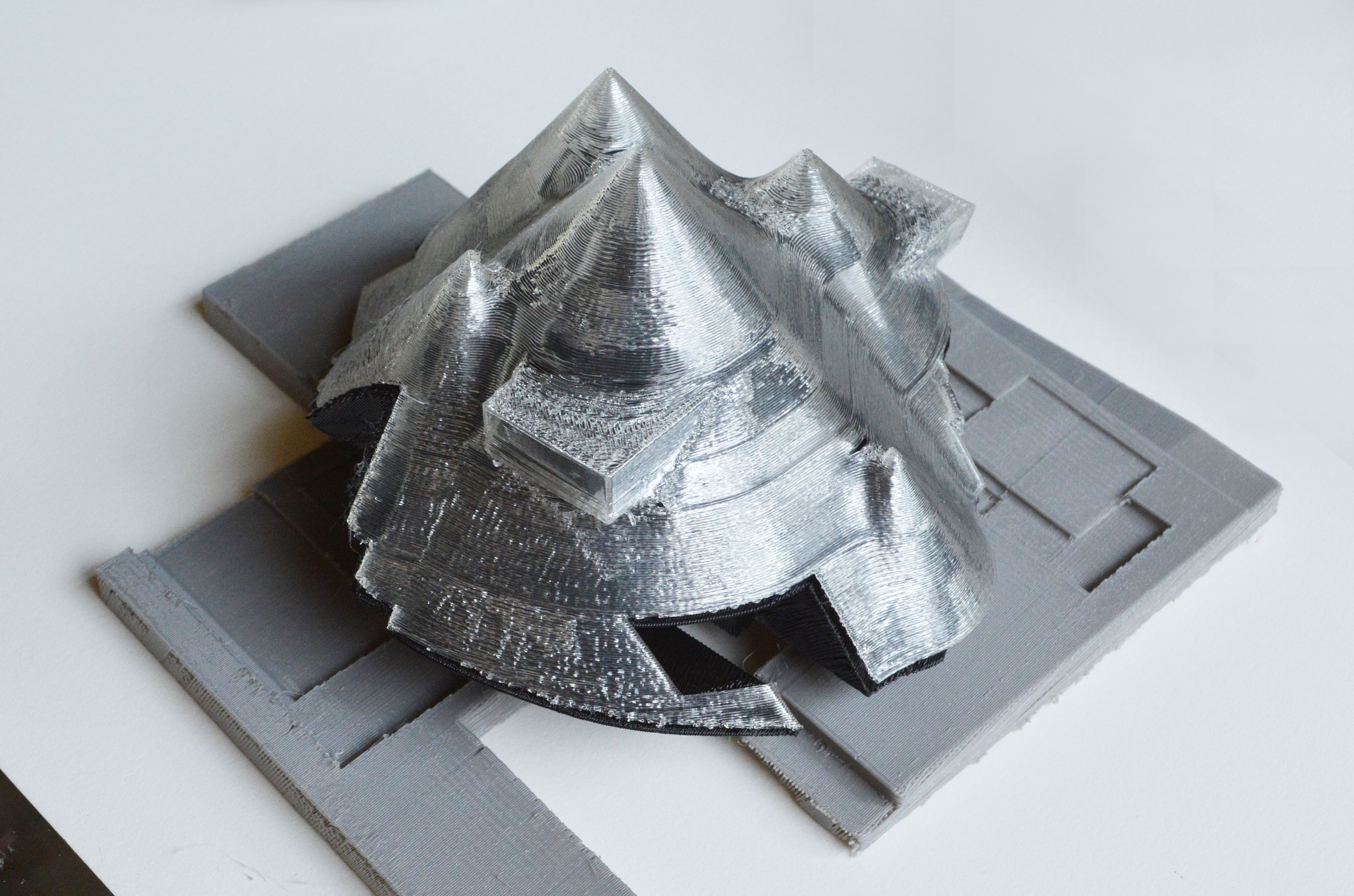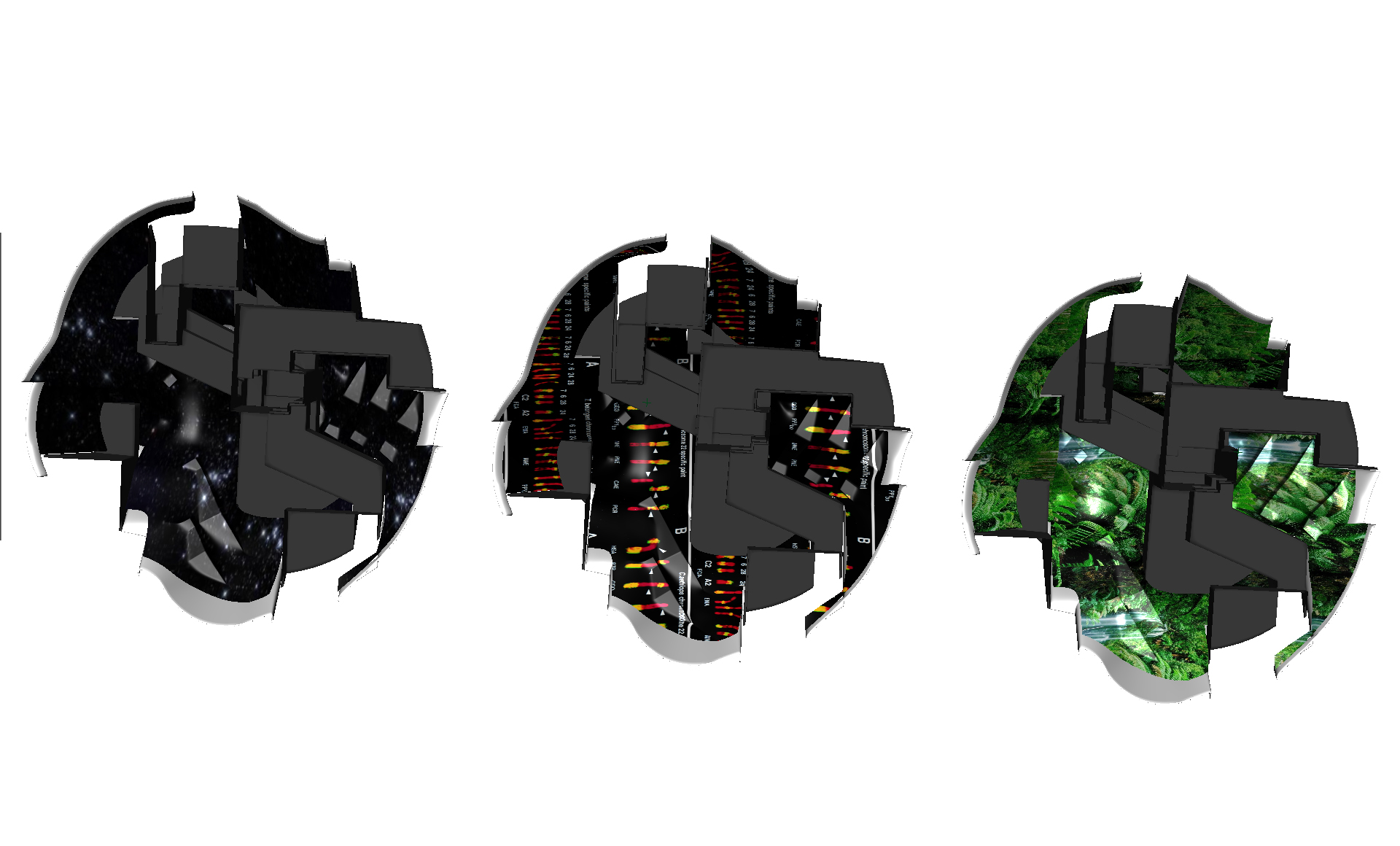
SCIENCE ISLAND
Located in Kaunas, Lithuania, this design for Nemunas Island engages the public imagination with a strange, hovering mountain that erupts from the green island reserve. Removed from the commercial and sporting areas to the south, a five-peaked mountain rises at the edge of the river on Nemunas Island’s wild northern end.
Read More
Directly adjacent to the historical city center, the project includes a new proposed bridge to connect the new building with the mainland and allow for off-island parking. Unlike a natural formation, this mountain lifts off the land; its massing resonates loosely with the medieval castles of Kaunas and other nearby Lithuanian cities. The mountain’s ambiguous relation to ‘nature’ and local architectural icons creates a sense of unknowability and intrigue in the building, provoking visitors to engage and explore it. It stands not as a legible symbol of science and technology, but rather as a mysterious, durable entity that can be continuously discovered.
A Snow Globe
The interior of the mountain is a vast three-dimensional space. Like a city inside a snow-globe—or a machine—a giant, dark figure is nested inside the mountain. This figure contains the three permanent galleries and stepped balconies to view the temporary exhibition spaces below. As the figure breaches its container, it is sliced off to create deep involutions in the mountain’s outer shell. These involutions serve as protected outdoor balconies for cafes and relaxation, providing views to the island and city beyond.
The building circulation is embedded in the mountain’s outer poché wall and it zig-zags upwards to the peak. Visitors ascending this oblique, inhabitable wall are confronted with the sense of having no ground beneath them, as if in outer space. The delaminated inner-liner surface of the building is used for large, continuous digital projections of real-time scientific content, such as the Hadron Supercollider spooling up, data-streams of recently decoded monkey genomes, or images sent from deep space NASA probes. The interior thus becomes a giant planetarium-like stage for experimental science, asking visitors to contemplate the history of scientific method, technology, and ethics in relation to current paradigms and initiatives.
Solar Tattoos
The building envelope is made of fiber-reinforced polymer super-panels that are unfamiliar in scale and shape in comparison to conventional means of construction. This envelope system creates ambiguous scale effects that further remove it from reduction to any particular metaphor. The super-panels are embedded with solar tattoos, which not only generate energy, but also blur the edges of building mass and black involutions. At night, the envelope’s black patches visually dissolve parts of the building and create an alternative reading of its silhouette. Embedding or fusing technology into architecture—enacting its ‘disappearance’ in favor of magical effects—is a crucial goal of the project.
LOCATION
Kaunas, Lithuania
TYPE
Science and Innovation Center
YEAR
2016
FLOOR AREA
13,000 SM
CLIENT
City of Kaunas
DESIGN TEAM
PROJECT TEAM











The interior of the mountain is a vast three-dimensional space. Like a city inside a snow-globe—or a machine—a giant, dark figure is nested inside the mountain.

